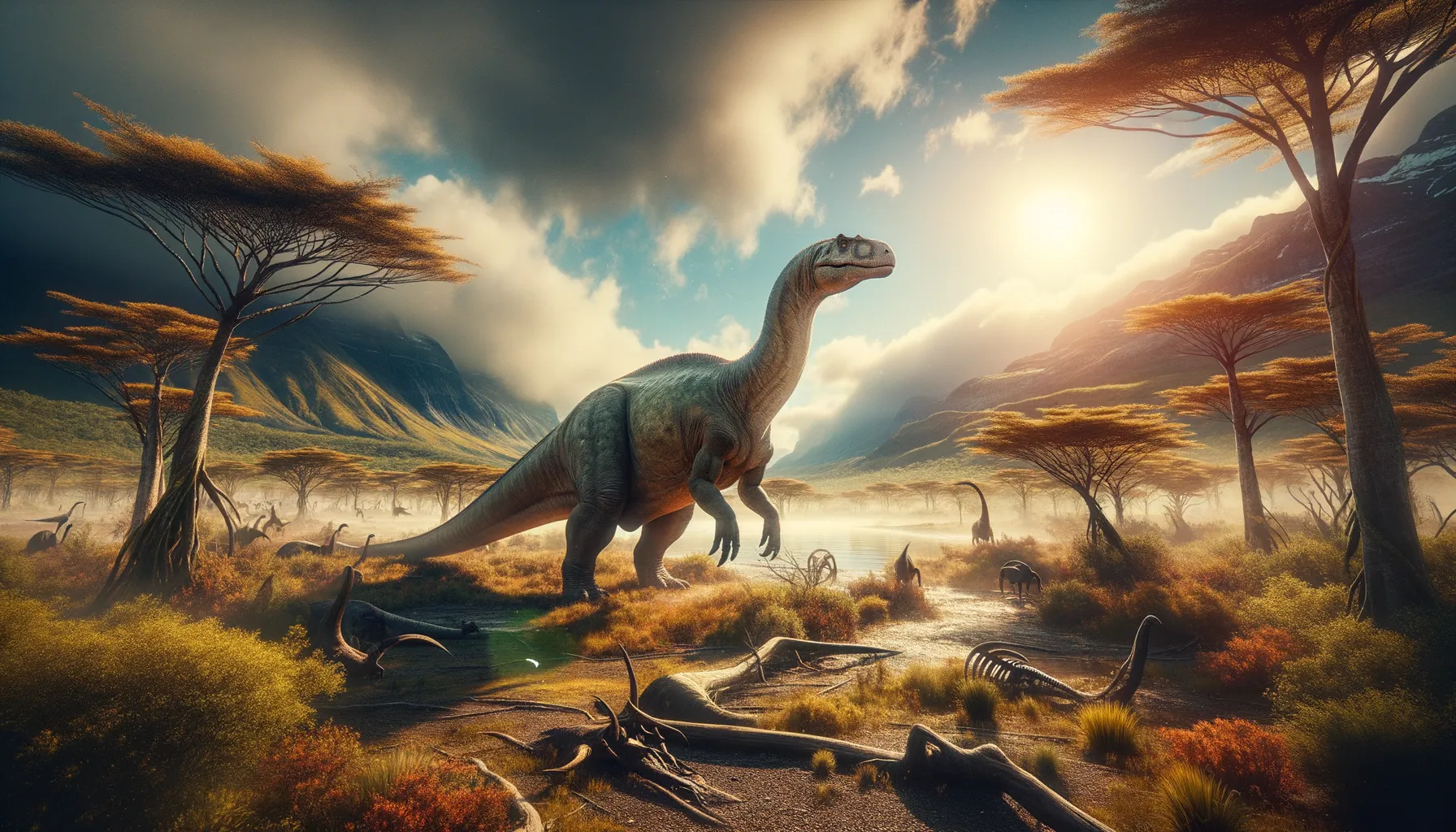
Rinconsaurus
Gentle giant of the Cretaceous era.
Period
Cretaceous
Length
Its length was around 11 to 15 meters.
Height
It stood about 7 meters tall.
Weight
It weighed approximately 30 tons.
Rinconsaurus was a large herbivorous dinosaur that roamed the Earth during the Late Cretaceous period. This giant, quadrupedal creature is known for its long neck, which it used to reach high vegetation. Its fossils were discovered in South America, contributing significantly to our understanding of sauropod diversity in the region. Despite its size, Rinconsaurus shared its environment with several other dinosaur species, navigating a world filled with predators and shifting climates.
Diet
As a herbivore, Rinconsaurus fed primarily on plants. It used its long neck to forage from tall trees and low-lying shrubs, providing it with a versatile range of food sources.
Hunting
Rinconsaurus did not hunt; it was strictly a plant-eater. It relied on its sheer size to deter predators rather than any aggressive behavior.
Environmental challenges
During the Cretaceous, Rinconsaurus faced changing climates and occasional food scarcity. Competition for vegetation with other herbivores was a constant challenge. Additionally, its large size made it vulnerable to climate-induced habitat changes and predation during its juvenile stages.
Speed
Rinconsaurus was likely a slow mover, limited by its massive size.
Lifespan
It had a life expectancy of several decades, possibly up to 70 years.
First discovery
The first fossil of Rinconsaurus was discovered in Argentina in 2003.
Fun Facts
- Rinconsaurus was a long-necked dinosaur known as a titanosaur that lived during the Late Cretaceous period.
- This giant plant-eater was discovered in Argentina, a hotspot for many titanosaur fossils.
- Despite its massive size, Rinconsaurus likely had a small head compared to its long neck and large body.
- Rinconsaurus is known from only a few bones, but researchers believe it was similar in appearance to other known titanosaurs.
- The name 'Rinconsaurus' comes from the Spanish word 'rincón,' meaning 'corner,' referring to the region where it was found.
- Rinconsaurus had a long tail, which it possibly used for balance and communication with other dinosaurs.
- Fossils of Rinconsaurus were first described by paleontologists in 2003, making it a relatively recent discovery.
Growth and Development
Rinconsaurus hatched from eggs and experienced rapid growth during the early years. This fast growth rate was essential for avoiding predators. As it matured, its growth slowed, eventually becoming one of the largest creatures in its habitat.
Habitat
Rinconsaurus lived in what is now modern-day Argentina, a region that was once lush with forests and river systems. This environment provided ample food and supported a diverse range of dinosaur species. Seasonal changes may have impacted the availability of certain plant foods.
Interaction with other species
Rinconsaurus coexisted with various herbivorous and carnivorous dinosaurs. While it mostly lived peacefully with other herbivores, it had to remain vigilant of predator species like large theropods. Its massive size likely deterred smaller predators from attacking.
Natural lifespan
Rinconsaurus could live over 50 years in the wild, assuming it survived the vulnerable juvenile period.
Reproduction
Rinconsaurus reproduced by laying eggs, likely in sandy or soft-soil nests. Parental care is uncertain, but the need for secure nest sites would have been a priority. Clutch sizes and incubation periods would have varied depending on environmental conditions.
Social behaviour
Social behavior of Rinconsaurus is not well-documented, but herding might have been a beneficial strategy to protect the young from predators. This social structure could have involved complex communication and coordination among group members.
Fossil locations
Rinconsaurus fossils have primarily been found in the Neuquén Basin of Argentina. These fossil sites have provided important insights into the diverse fauna of the Late Cretaceous period in South America.
